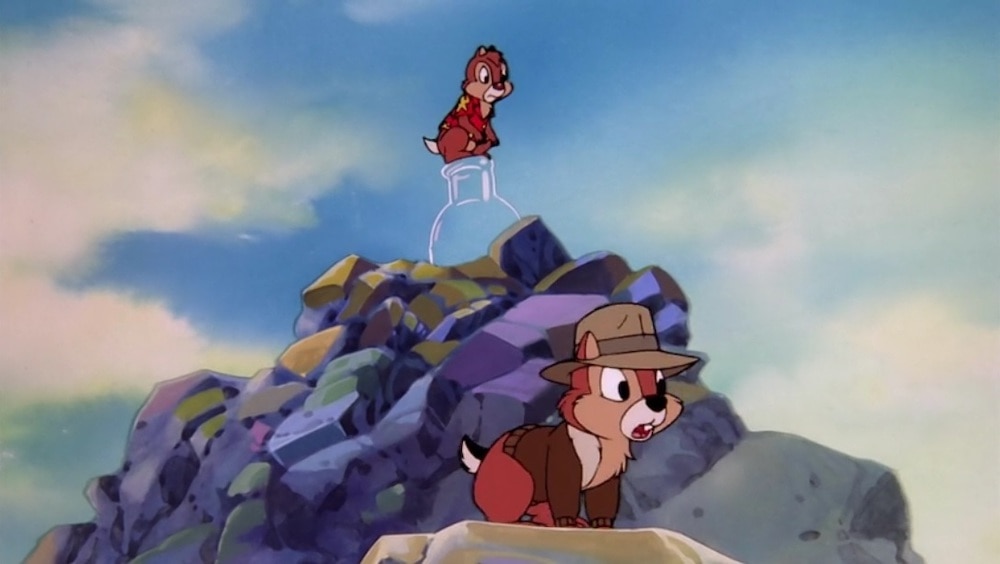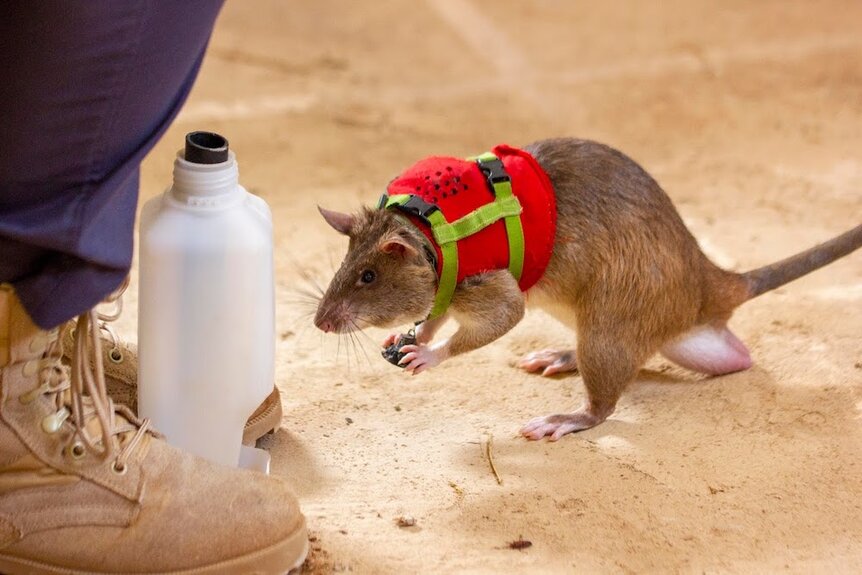Create a free profile to get unlimited access to exclusive videos, sweepstakes, and more!
Rescue Rangers? Giant rats are the future of search and rescue animals
There's no case too big, no case too small, when you need help just call...

Disney’s Chip ‘n Dale: Rescue Rangers was a keystone member of the famed Disney Afternoon programming block in the ‘90s. A generation of kids grew up watching the quartet of rodents (don’t forget Zipper) solve crimes and help people. Around the same time, Bart Weetjens was in Belgium cooking up a way to bring those cartoon heroes to life.
In the ‘90s, after reading an article about rodents being used as scent detectors, Weetjens started thinking about using rats as a way to detect landmines by training them to locate the chemical scent of explosives. A few years later, APOPO was born as a non-profit organization in Belgium.
The organization chose African giant pouched rats as the ideal rodent mainly due to their relatively long lifespan — seven years or more — giving ample time for training. By 2000 APOPO moved operations to their intended destination of Tanzania, in partnership with the Sokoine University of Agriculture and the Tanzanian People Defence Forces. In total, they’ve conducted demining operations in eight countries, and the rats are able to accelerate the location of landmines by bypassing scrap mettle to seek out explosives directly. Today, some of their rats can search an area in 20 minutes, which might take between one and four days to search using traditional methods.
The rats’ ability to seek out specific scents have also been beneficial in detecting tuberculosis in affected communities. And now APOPO is working on a new initiative, training rats for search and rescue operations.
HeroRATs, as they have been dubbed, are as trainable as dogs and have a comparable sense of smell, with the added benefit of their small size. While the search and rescue program is in its infancy, the team at APOPO plans to pair rescue rats with dogs and handlers to work together.
Typically, search and rescue dogs will work an area and identify sites where a person might be trapped. Rescue rats would take over from there, moving deeper into the rubble to more definitely locate a person in need of help. Once they’ve found their target, they’d drop a beacon in the form of a ball which emits a sound that rescuers could use to more directly locate a trapped person.
Training starts when the rats are very young and works in three stages. First, the rats are trained to return to their starting location when they hear a beep. Next, rats are fitted with a backpack and an attached ball which they are trained to pull off of their backpacks. Finally, they are trained to seek out human targets. Those three simple actions are all it takes for the process to work.
In a real-world scenario, the ball begins beeping when it’s released from the rat’s backpack, acting as the beacon for rescue teams. A fully trained rat would seek out a target, release the ball from their backpack, and return to their starting point when they hear the ball beeping.
Each phase of training is positively reinforced with a treat until the rats reach proficiency in the three critical steps. APOPO currently has nine rats they’re training for this project, in addition to their ongoing efforts. Six of them have mastered all three steps, while the remaining three are proficient in steps one and two.
Search and rescue efforts utilizing rats are still in preliminary stages but the success of these animals in both landmine and disease detection over the last 20 years bodes well for their future as real-life Rescue Rangers.
Because the career of a HeroRAT only lasts about five years before they get to enjoy their retirement, APOPO is constantly training up new rats to continue their work, and many of them have appropriately heroic names like Ronin and Shuri, both of which are available for you to adopt. You can’t be a Rescue Ranger, you’d never fit on their tiny bottle-based airship, but that doesn’t mean you can’t help.



























